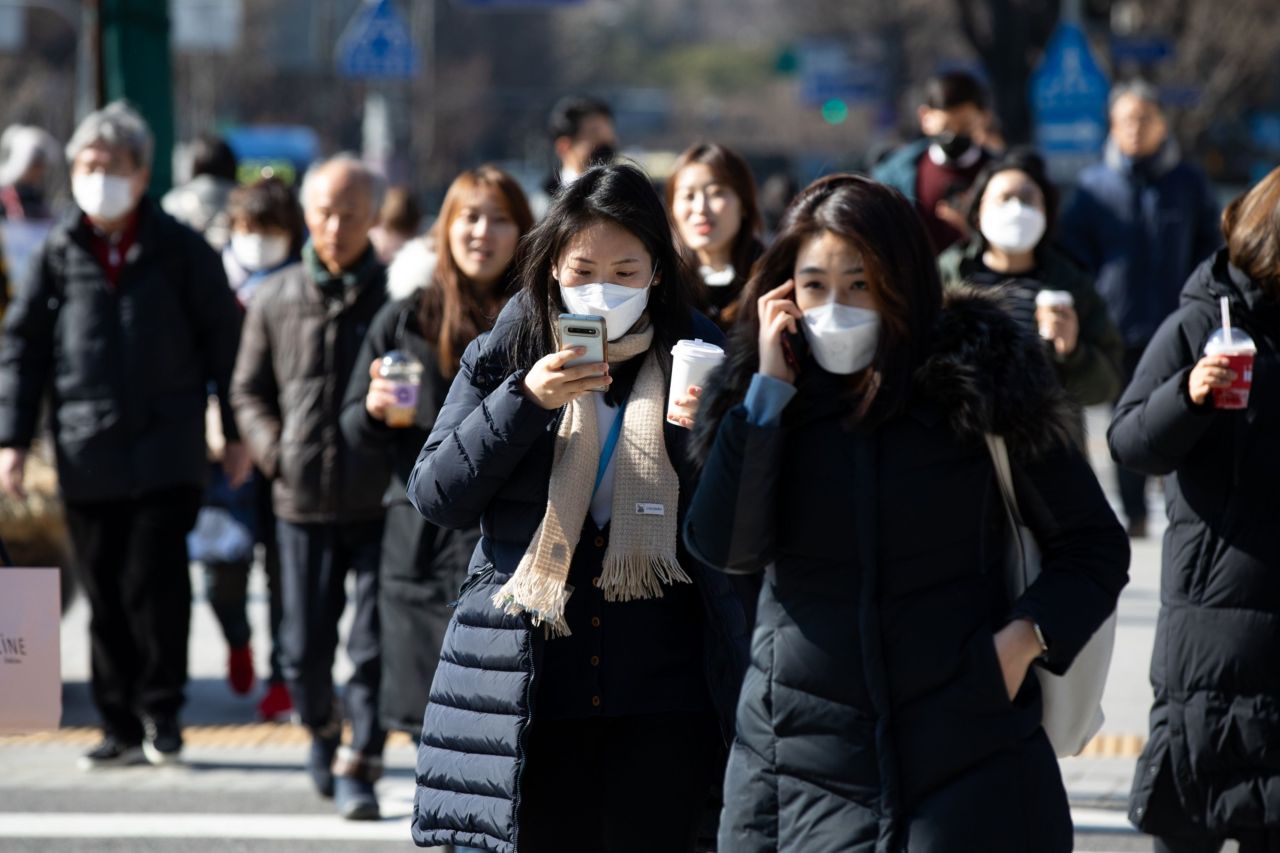 |
Pedestrians cross a road in the Gwanghwamun district of Seoul. (Bloomberg) |
South Korea’s gender pay gap persists at major companies, with a recent research suggesting women still earn almost 40 percent less than men.
Data from market tracker Korea CXO Research Institute released Monday showed the average annual pay for female workers was 54.2 million won ($44,151) at the nation’s top 150 companies as of 2020, about 38 percent less than the male average of 79.7 million won.
Across industries, IT companies such as Kakao and Naver had the highest salaries for female workers, with the average at 75.2 million won. Financial (74.2 million won), automotive (61.2 million won) and pharmaceutical (58 million won) sectors also showed above-average salaries for women.
Among individual companies, there were eight companies where the average pay for females exceeded 80 million won. Samsung Electronics at 97.72 million won was the highest-paying company for women, followed by NH Investment and Securities at 97.52 million won, Mirae Asset Securities at 92.19 million won and Naver at 91.13 million won.
Across all 15 sectors, no company had a pay gap in favor of women.
The textile industry had the lowest gender gap of 11.4 percent, but the lower discrepancy was largely due to the industry’s low salary level overall.
Automotive, pharmaceutical, IT and electronics sectors also showed relatively less gender disparities ranging from 23 percent to 26 percent.
The construction industry had the worst gender gap, with the discrepancy amounting to 43.6 percent. There were more than 40 percent gender pay gaps in steel and financial sectors.
Of the total 831,096 employees at the top 150 companies, women accounted for 199,672 people, or 24 percent.
Female workers made up 53.9 percent in the retail sector but the pay gap was 39 percent in favor of men, above the average.
“With EGS rules getting toughened, there are calls to enhance diversity across industries. And the gender pay gap could be narrowed somewhat during the course of such efforts,” said Oh Il-sun, director of the institute.
According to OECD’s latest data, South Korea has the worst gender pay gap at 31.5 percent among member countries. The country ranked last on The Economist’ Glass Ceiling Index for a ninth consecutive year in 2019, measuring where women have the best and worst chances of equal treatment at work.
By Lee Ji-yoon (
jylee@heraldcorp.com)








